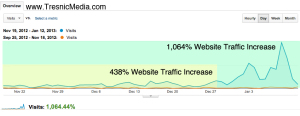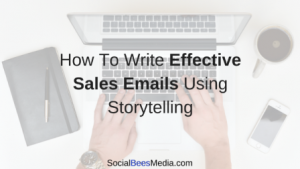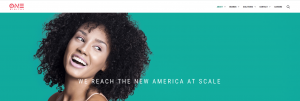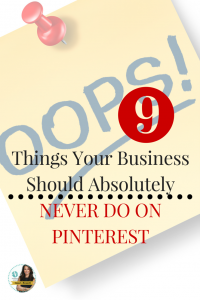It’s not always all about the likes.
Being a brand and having a Facebook page means many things, and at first most brands think only about getting those likes. “Likes” seem to make sense, in a way. The more people that like your stuff, the more you resonate with your audience and the more potential there is for gaining new customers. Apparently.
But as time goes on and the likes become more frequent, brands start to realise that they don’t necessarily do anything when it comes to bringing money in. And that is not cool. All that hard work that a brand puts in to boost engagement has resulted in, basically, a popular Facebook page and nothing more.

What some brands need are click-throughs to the website. These little babies can help you get a return on your investment. You’ve invested time and money into building up a quality Facebook presence in hope of seeing some kind of a return. If people start to click on links in your Facebook posts and then go through to your website, which sells stuff, then the Facebook page is literally a selling tool. And that makes a lot more sense to brands. Use Facebook as a selling tool, and everyone in the company, from the sandwich maker to the CEO, has a reason to push things on Facebook.
This post is all about ensuring those link clicks happen. The tips here are designed to make attracting click-throughs a natural part of the brand experience, and the dream of true Facebook ROI a reality.
Use your analytics
That’s right, you need to use the data you have to see what works. Because if something works, it is worth emulating.
Take a look at your data for your Facebook presence and see which posts gained the most click-throughs. Then do the same again. Obviously, you don’t want to copy posts, but you can look at the style and features in the posts and see which elements are worth repeating (and possible to repeat). This is because the posts that work will most probably have something in common. They gained clicks for a reason.
Do posts with link thumbnails gain most clicks? What about if you include both a link in the copy of your post and the link thumbnail too? What difference does it make when you have the link in the copy but then you use a native video or image instead of the thumbnail? What about if you just have a short copy with a link and you remove everything else? All these can be answered by looking at your past performance.
Repeating what works is the best way of improving your performance. Don’t forget that you have an audience, and that audience has a general feel for what they like. If you are able to repeat and keep giving them what they like on a regular basis, they will keep clicking. It’s just common sense really.

Run a contest
Ok, this can be done really badly by brands that simply want people to click. You don’t just want clicks, you want targeted clicks and people who click through to be engaged. This is why if you do competitions well you can often find that they result in high quality click-throughs that have meaning for you as a brand.
Keep the text short and concise and focus on not giving too much away in the post.
You need to entice people into the external site or page, and that means teasing them with the promise of an excellent prize that means something to them. This only happens if you keep it short and sweet.
Also, make sure you pin the post at the top of your page. This way everyone who needs to know about the contest will know about it as soon as they arrive at your page. It’s an absolute classic when it comes to click-throughs.

Use your images wisely: They can help with click-throughs too
Click-throughs are not just about plonking a couple of links in your post and hoping people bite. That’s a little too old school for the modern consumer. One great way to ensure that click-throughs come more naturally is to include calls-to-action in your images. Images get plenty of love on Facebook, but if you just include images that don’t offer much more than a pretty picture, then you are looking at nothing that will bring you ROI.
Consider using images and videos that have clear calls-to-action in them. If you have a picture of your latest product, add a call-to-action that helps people find out where to buy that product, and how.
If you’re holding a seminar or talk about your industry and you want to use the platform to sell tickets, make it clear on an image what people have to do to book a place. It sounds ridiculously simple, but many brands just don’t give the public a reason to click. And when you consider that images and videos are the most magnetic aspects of your feed, it makes perfect sense to ensure that they have a reason to click. Include a call-to-action and it will generate clicks to your site or offer page.

With calls-to-action it always pays to experiment and test. You can find out which calls-to-action give you the best result over time, by trying a few and seeing which generate action. Once you know which wording gets the most action, stick with it and you’ll soon find that you have a selling tool on your Facebook page, not just a pretty picture.
Start engaging: That means working with the audience you have
Engagement is incredibly important for any brand. It helps that brand to connect with its audience and to also establish a voice. The conversation needs you in it, basically, and on Facebook this is even more urgent.
If you receive a comment on your Facebook page, respond to it as quickly and fully as is reasonable. Obviously, if you have thousands of comments daily (some brands do) then you can’t do this so easily. But as comments start to come in, aim to respond and build a conversation. Ask questions about the comments. Engage with the audience in this way and it makes you someone worth staying in touch with.
The fact is that pages that have clear engagement really do draw in the clicks. It just makes people feel like you’re worth engaging with, and this in turn makes it easier for them to feel the need to click on your link and go to your site.
Add your thoughts, bring originality to the game
This is something that isn’t easy to do at first, possibly. But the basic rule here is that we all like to share our thoughts, our ideas on the topics we post about. If this is the case, why don’t more of us add our own comments to our Facebook posts?
Check it out. Head on over to the Facebook page of anyone you respect and anyone who has some kind of traction in your industry, and you will see that they add their own personal comments to their updates. They do this because they know that personal comments equal engagement.
The audience need to know that you are real, and that you have a take on things. Otherwise, you could quite easily be someone who has simply been hired to update Facebook on an ad hoc basis, just to fill in the numbers.
That’s not how you build a band. Instead, focus on ensuring that you add your own personal comments to Facebook updates as often as possible. Everyone has something to say, and as you do it more often, your comments will become even more insightful. People like insightful and they will keep coming back for more if that’s what you give them.
If you simply cannot think of anything to say then say nothing. But don’t go too long without adding your own thoughts on issues and items in your marketing agenda. It develops something that is often referred to as thought leadership. And if you got that kind of thing going on, the online world is your oyster.
Work on the whole package and get marketing smart
It is all too easy to just put together a quick post and then let it fly. But that isn’t working anymore when you look at the modern world of marketing, and on Facebook it’s a dead cert way to stall.
You need to think about the message you’re conveying, and how you are using all of your media effectively to get that message across in a consistent way.
We’re talking about the whole package here. Look at the images you use and see if they fit in with that post’s message. Are they high quality and resonant? Does the text content back up the image too? And that link, is it natural, and fitting in with your brand and image?
It’s kind of hard to articulate, but if you are able to create a strong branding message through the posts, and if everything naturally fits together with no feeling of jarring among the text, link thumbnails, you are looking at more click-throughs.

Basically, if your image matches the text, and the text backs up the impact of the image you’re all good.
Be conversational (it’s human)
Use exclamation marks. Don’t be afraid to do this, because so many brands are. Using conversational markers is important, it shows your audience you are real, and in the case of exclamation marks, that you get excited too.
Develop a focus on conversational language and you will see that this has a knock-on effect on your engagement and your click-through rate. Try it. People will love the fact that you’re funny, human, and that you use exclamation marks like a ten-year old now and then. Brands don’t have to hide behind a stuffy exterior.
They can instead embrace their human side, and watch their results escalate.
The killer question
It is all too easy to just put together a quick post and then let it fly. But that isn’t working anymore when you look at the modern world of marketing, and on Facebook it’s a dead cert way to stall. You need to think about the message you’re conveying, and how you are using all of your media effectively to get that message across in a consistent way.
Questions that lead people directly to solutions are great for pulling in the click-throughs.
Ask your audience if they want something (you know the answer is ‘yes’ because you know your audience. So for example, if you sell a product that has been proven to aid restful sleep your question could be:
‘Want the best night’s sleep ever? Well click here to find the solution you’ve been waiting for.’
Offer up the link and watch the click-throughs mount up.
How does this work? Well, you’re asking the audience a question that is essentially rhetorical in that they don’t even have to give you the answer. And then you’re following it up with a link to the perfect solution.
Questions are incredibly effective because they set the reader up for your solution, pure and simple. You could ask if they want to know how to do something:
‘Want to learn Spanish, but quickly? Click here to find out more.’
It’s not just limited to basic products either. You could talk about the service that you offer and make that the solution to the problems the audience is facing. Play around with it and pretty soon you’ll realise questions can really help increase your click-through rate.
Try some of the ideas above and you’ll find that gaining click-throughs is not that difficult, and that getting more and more is not rocket science. Give your audience a reason to click through and you’ll soon see a steady upward curve.
Digital & Social Articles on Business 2 Community(99)
Report Post








